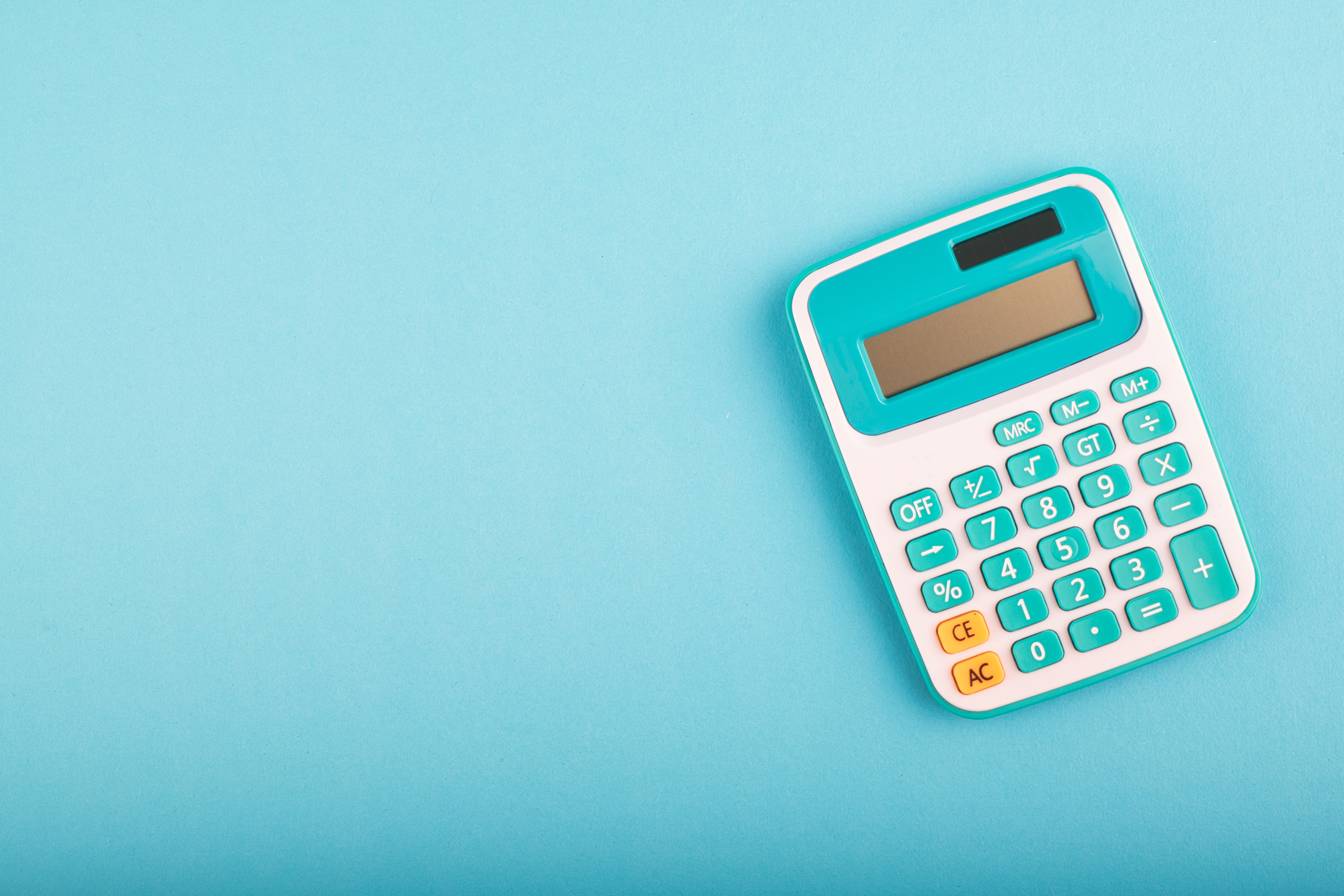Unlike your Clergy pension, your AVCs build up a pot of money that goes up and down depending on the amount you save in, and the investment performance. If you earn enough to pay tax, and you keep within certain limits, your AVCs are tax-free when they go in and we can usually give most or all your AVCs back to you tax-free when you retire.
We invest your AVCs with Legal & General Investment Management. If you saved AVCs with us in the past, they may be invested with Prudential.
Key takeaways
- Your savings are tax-free on the way in, and we can usually pay all or most of your savings back to you tax-free when you retire
- Save for retirement when you have fewer financial commitments, and only save what you can afford
- Setting up a monthly savings plan takes away the hassle. You can change this whenever you need to
- Saving little and often rather than a lot over a shorter period can be more manageable
- You don’t have to have investment know-how, we can deal with the investment for you
Why save money into my pension?
Think of saving AVCs as a long-term savings plan, but with tax-relief. Every time you save money into your pension, you get tax back from the government. You might be surprised how quickly your pension savings can start to build up. Let’s look at some examples.
- If you do not earn enough to pay tax, unfortunately, you do not get tax relief on the money you save into your pension
- If you are a 20% taxpayer, you get 20% back on everything you save into your pension. So, if you save £100 only £80 comes out of your stipend or salary
- If you are a 40% taxpayer, you get 40% back on everything you save into your pension. So, if you save £100 only £60 comes out of your stipend or salary
Before you commit, there are many ways you can save for later life. Your pension is just one way. If you are thinking about saving a large amount into your pension, you might want to speak to a financial adviser to make sure this is the best thing to do with your money. Click here to find out more about financial advice.
How much can I save?
If you save monthly through your stipend or salary, the minimum amount you can save is £10 a month. The maximum you can save is 100% of your taxable earnings, less any deductions such as Heating, Lighting and Cleaning.
You also have a tax-free limit on how much you can save each tax year. This is called your ‘Annual Allowance’. Currently you can save up to 100% of your taxable earnings each tax year, or £40,000 if you earn more than this, into a pension and get tax relief. If you go over this, you might have to pay tax. This cap applies to all your pensions, not just your pension with us.
It can be tricky to work out how much your tax-free limit is. If you would like to know more about how much you can save, we’ll help as much as we can. But, if you are thinking of saving a large amount in one tax year, you should speak to a financial or tax adviser to make sure you can claim all the tax back.
Saving ‘little and often’ or saving a lot later?
This is the big question many people ask themselves. Should I save a little bit now or wait until I am closer to retirement and go for a big savings push then? Let’s look at both, but you don’t have to choose one or the other, you can do both.
Saving a little sooner
Saving little and often out of your stipend can see your savings really build up. When you start saving a little each month you soon get used to your new take-home pay and forget about the money being taken out. Saving early means you give your pension more time to build up.
As your savings are invested, spreading your savings over a longer period often smooths out the investment ups and downs.
Saving a lot later
Sometimes people have a bit more financial freedom when they get closer to retirement. Putting some of this extra money into your pension can be a great idea.
Usually, you need to put more into your pension savings if you start later, compared to if you start earlier in life. If you want to save a lot later, it's worth thinking about how you invest your AVCs and saving in lower risk investments.
Not everyone has more financial freedom when they are older. You might have other priorities when you get closer to retirement, such as where you might live. Saving a lot of money into your pension might not be a realistic option but saving however much you can afford will still make a difference.
Setting up a AVC plan
This is the easy bit. There are two ways you can do this:
Monthly through your stipend or salary – this is usually the easiest way to save as everything is dealt with for you. You pick the amount you wish to save and it’s automatically taken from your stipend. The tax relief goes straight back into your stipend every month. You can increase or decrease the amount you save or stop saving at any time.
One-off payments – you can top up your pension as and when you can with one-off payments. As you will have paid tax on these payments you can claim tax back by completing a self-assessment tax return. You usually get the tax back after the tax year has ended.
Whichever you choose, just download the form at the bottom of the page and send it back to us, and we'll get this set up for you.
What happens to the money when I retire?
Option 1 – taking my AVCs at the same time as my Clergy pension
If you take your AVCs at the same time as your Clergy pension we are likely to be able to pay you most, if not all your AVCs back to you tax-free. This could help with moving costs, or you could put it towards the retirement you are planning for.
If you take your AVCs at a different time than your Clergy pension you can only take 25% of your AVCs as tax-free cash.
How much can I take tax-free?
To work out how much we can pay you tax-free, we use this formula...
We multiply your annual pension by 20. Then, we add your tax-free lump sum from your Clergy pension and the value of your AVCs to this. We divide this whole amount by 4 to get 25%, then we take back off your Clergy lump sum. What’s left is how much you can take from your AVCs tax-free.
If your AVCs are less than the amount that is left, we can all your AVCs to you tax-free. If it is more, we can still pay the tax-free amount to you, and you can decide how to take the excess. One option is to take the rest as a taxed lump sum, or you can transfer it to another provider.
How much we can pay you tax-free depends on how much your Clergy pension is, and the size of your AVCs.
These examples show how much we could pay you tax-free.
|
Pension (p.a.) |
Tax-free lump sum |
Maximum tax-free AVCs |
|
£2,000 |
£6,000 |
£7,250 |
|
£5,000 |
£15,000 |
£18,000 |
|
£7,000 |
£21,000 |
£25,500 |
|
£10,000 |
£30,000 |
£36,500 |
These figures are if you retire at age 68 and are only examples. If you retire before or after this the figures will be different. If you would like to know how much you could take tax-free, ask us and we can let you know.
Option 2 – transfer my AVCs to another provider
If your AVCs go over your tax-free limit, you can move the amount we cannot pay you tax-free to another pension provider and spread payments over multiple tax years. This way you will usually pay less tax.
If you move your AVCs to another provider, you'll have these options.
- Leave your money where it is
You can leave your money invested in your pot until you need it. This will give it chance to grow, but it could also go down in value.
- Adjustable income
You can invest your AVCs to give you a regular income. You decide how much to take out and when, and how long you want it to last.
- Take cash in chunks
You can take smaller sums of money until you run out. A quarter of each chunk is tax-free, the rest is taxed as income.
- Buy a guaranteed income
Use your AVCs to buy an insurance policy that guarantees you an income for the rest of your life – no matter how long you live.
- Mix your options
You can mix different options. Usually, you need a big amount to do this.
What about investments, how does this work?
Not everyone is confident in making an investment choice. This is why we have a default investment option. This default option aims to make the most out of your savings when you are younger by investing in higher-risk places, before automatically switching to lower-risk places as you get closer to retirement. This should lock in your savings and limit the risk of your savings dipping just before you take them out again.
If you are confident in picking your own investments, we have a wide range of options, from high to low risk. If you are some way from taking your pot you probably want to focus on growth, so higher-risk funds might be suitable. If you are closer to retirement you might be more concerned with avoiding risk, so medium or lower-risk funds may be best.
Find out more about investing your savings in our AVC guide below.
Does saving into my pension have a downside?
Your savings are locked in
Only save what you can afford. If you might need or want access to your money before you retire there are other tax-effective ways to save, such as ISAs. But, locking your savings away until you retire means your money is there when you might need it most.
Managing your investment choice
As your savings are invested, they can go up as well as down and as with all investments, there is a risk. You should check your AVCs are performing how you expect and make changes if you need to.
This reflects our understanding of current legislation and practice. You should talk to a financial or legal adviser if you need specific guidance or advice.

If you would like to start saving into your Clergy pension, or you would like to change how much you're saving - fill out an AVC form.
Click here to download an AVC form
Remember, you can only set up an AVC plan if you are an active member.

Retirement can sometimes seem like a long way off, or so far away it hardly feels real at all. In fact, this is one of the most common reasons people give for not saving into their pension.
You may think you have a lot of time before you retire but anyone nearing retirement will tell you the years slip by. Building up your retirement savings can become harder the later you start. But, as they say, every penny counts and it’s never too late to start.
Click here to find out more about AVCs

If you're already saving AVCs, it's worth keeping an eye on how much you are saving and whether your AVCs are under or over the amoiunt we can pay you tax-free when you retire.
Our AVC tax limits guide explains how to can check this, and what you can do if you are under or over the tax-free limit.